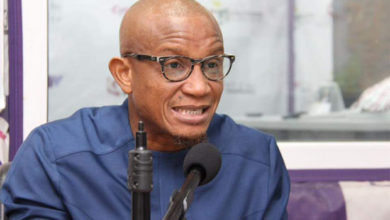Living conditions of Ghanaians not improved — IEA Survey

The living conditions of Ghanaians declined marginally between 2014 and 2015, according to a survey conducted by the Institute of Economic Affairs (IEA).
Those whose living conditions declined constituted about one-third of the population, with majority of them living in the Greater Accra, Volta, Eastern, Upper East and Upper West regions.
According to the survey findings, poor living conditions are influenced mostly by low income/wages, lack of access to safe drinking water and medical facilities, as well as high prices, among others. These factors need to be urgently addressed to improve living conditions.
The report draws on the third IEA Socio-Economic and Governance Survey (SEGS), which was carried out in November/December 2015.
Objective & methodology of survey
The main objective of the survey was to collect comprehensive information on individuals’ perception on socio-economic and governance issues, which would be used as evidence to provide policy recommendations and for planning.
Essentially, the survey sought to gauge public perception on issues such as economic/living conditions, safety and security, media abuse of freedoms, discrimination and relations between ethnic groups and trust in institutions within the six-month period before the survey was conducted.
The survey consisted of a sample size of 1500 respondents aged 18 and above from the 10 regions of the country.
Females better off than males
According to the report, females were better off than males, with the proportion of females who had good living conditions increasing from 21.7 per cent to 23 per cent, while the proportion of males who reported good living conditions declined from 27.7 per cent to 22 per cent between 2014 and 2015.
The living conditions of urban dwellers were found to be better than those of rural dwellers, with 68.5 per cent of the latter reporting bad living conditions, as compared to the former (58.9 per cent).
Food security
Food was not a problem for most households in the country. In fact, majority of households in the country (60.7 per cent) never went without having enough food to eat in the six-month period the survey reviewed.
It is also significant to note that the proportion of households that reported going without food always reduced significantly from 4.2 per cent in 2014 to 2.3 per cent in 2015.
However, the story in the Brong Ahafo Region is markedly different, with about a tenth of households in the region going without enough food always.
Although the overall food situation improved countrywide, it was not promising in the Upper West, Upper East, Northern and Western regions.
The report indicated that households in the Upper East (21.9 per cent), Northern (20 per cent), Upper West (13.3 per cent) and Western (12.6 per cent) regions went without food many times, perhaps due to the prolonged drought in 2015.
“It is about time the government put in concrete measures to fully implement all national, sub-regional and regional food security policies and programmes to which the Government of Ghana is a signatory,” the report recommended.
Access to safe drinking water
The report suggested “the continuous provision of clean water for drinking could be a foundation for the prevention and control of water-borne diseases”.
It is, therefore, refreshing to know that access to water has improved since 2014, with more than half of the households across the country never going without water, but there is great cause for concern, given the fact that access to safe drinking water in the Northern, Upper East and Upper West regions worsened between 2014 and 2015.
“The Northern and Upper East regions had less than half of their households (33.6 per cent and 48. 6 per cent, respectively) having access to water always, while about half (49.6 per cent) of households in the Western Region went without enough water – up from 40.6 per cent in 2014,” the report indicated.
Other indicators
Other living condition indicators such as access to medical services, cooking fuel, schooling expenses and access to general public services were also surveyed.
According to the report, between 2014 and 2015 access to medical services in the regions reduced from 48.2 to 32.1 per cent in the Western; 64.2 to 62.6 per cent in Ashanti; 46.5 to 43.5 per cent in Brong Ahafo; 36.7 to 35 per cent in Upper East and 53.5 to 29.5 per cent in Upper West.
The report recommended that societies devote resources to preventive or curative health measures which have a large measurable effect on the life expectancy of the population as a whole.
Credit: Daily Graphic






Projektujemy strony internetowe najwyższej jakości, Twój sklep lub strona będzie profesjonalnie zaprojektowana i
responsywna.
Zbudowanie pozycji w Internecie dla danej strony internetowej przekładać się będzie bez względu na rodzaj prowadzonej strony na dochody.
Jednocześnie działania mające na celu zwiększenie ruchu na stronie mogą być
realizowane różnymi metodami marketingu internetowego.